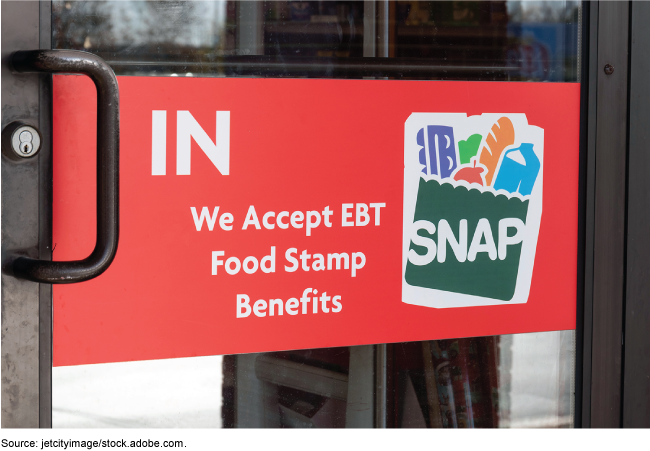Supplemental Nutrition Assistance Program: Estimated Eligibility and Receipt among Food Insecure College Students
Fast Facts
About 3.8 million college students experienced food insecurity in 2020. A majority reported multiple instances of eating less than they should or skipping meals because they couldn’t afford enough food.
Some college students may qualify for Supplemental Nutritional Assistance Program benefits—the nation's largest such program for low-income households, formerly known as "food stamps." But they must meet other eligibility criteria specifically for college students, such as working while in school or being a single parent.
We found that about 59% of food insecure students who were potentially eligible for SNAP didn't report receiving benefits.

Highlights
What GAO Found
An estimated 23 percent of college students (3.8 million) experienced food insecurity in 2020, according to GAO's analysis of student data from the Department of Education's National Postsecondary Student Aid Study (NPSAS). The U.S. Department of Agriculture defines the range of food security to include high, marginal, low, and very low, and it categorizes those with low or very low food security as food insecure. Among food insecure students in 2020, a majority (2.2 million) had very low food security, meaning they reported multiple instances of eating less than they should or skipping meals because they could not afford enough food.
SNAP benefits are available to eligible low-income households to help them pay for food. For students to qualify for SNAP, they must meet additional student-specific criteria, such as working at least 20 hours a week at a paid job. Using available Education data, GAO estimated that fewer than two in five food insecure students met the criteria to be potentially eligible for SNAP. Of these students, 59 percent did not report receiving SNAP benefits in 2020.
Estimated Supplemental Nutrition Assistance Program (SNAP) Receipt among Potentially Eligible College Students, 2020

aThe 95 percent confidence interval is within a margin of error of +/- 3 percentage points.
Why GAO Did This Study
In fiscal year 2023, the federal government spent approximately $31.4 billion dollars on Pell Grants to help over 6 million students with financial need go to college. This substantial federal investment in higher education is at risk of not serving its intended purpose if college students drop out because of limited or uncertain access to food.
Some studies have found that food insecurity negatively affects students' academic success. Certain students are eligible for SNAP—the nation's largest nutrition assistance program available to low-income households.
Given the substantial federal investment in higher education, GAO was asked to review newly available Education data on food insecurity among a nationally representative sample of college students.
This report, which is the first of two reports on college student food insecurity, describes what Education's NPSAS data show about food insecurity among college students and their access to SNAP benefits. GAO's estimates are based on 2020 NPSAS data, which were the most recent available.
For more information, contact Kathryn Larin at (202) 512-7215 or larink@gao.gov.
